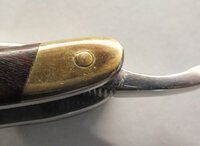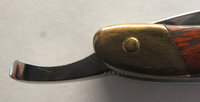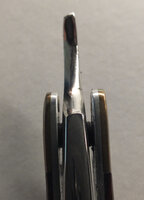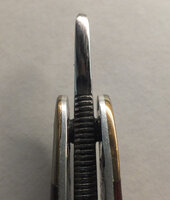- Thread starter
- #21
I do make my own washers or modify stock ones but in this case one of the benefits of accurate drilling is you get the washers back.
In post # 2, last pic, you can see one in the bottom if the photo .
not having a drill press you can use a pin vise. Naturally it's slower but you'll have good control and it's safe. And drilling brass or nickel isn't like drilling steel by hand. I have a couple of them.
One other suggestion is to use a magnifier. You'll get a view of the playing field equal to these close up shots and see just what you need to do and how it's going. I live with ones strapped to my head.
In post # 2, last pic, you can see one in the bottom if the photo .
not having a drill press you can use a pin vise. Naturally it's slower but you'll have good control and it's safe. And drilling brass or nickel isn't like drilling steel by hand. I have a couple of them.
One other suggestion is to use a magnifier. You'll get a view of the playing field equal to these close up shots and see just what you need to do and how it's going. I live with ones strapped to my head.
Last edited:



